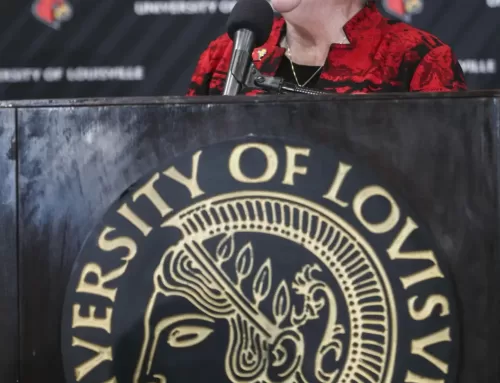By Olivia Krauth–
Underpaid faculty, disgruntled staff: A&S hugs the bottom rung compared to peer institutions’ salaries and suffers from the lowest morale in years.
According to multiple surveys from the college, A&S faculty and staff receive lower wages than their equivalents at similar institutions. The impact? Low morale within the college and difficulty making ends meet.
A&S faculty released three surveys in the past two months. The first, by Pan-African Studies chair Ricky Jones and philosophy chair David Owen, focused on climate in A&S. The second, by a group called the Faculty Salary Working Group, set out to find an updated salary comparison. The third, compiled by faculty assembly chair Andrew Rabin, has faculty and staff responses to having lower mean salaries than peer institutions.
Surveys say A&S faculty and staff have lower salaries than the average, which are a root cause of the low morale in the college. The morale then creates difficult work climate.
Some are taking action. History professor Mark Blum is considering reactivating U of L’s chapter of American Association of University Professors.
“There seems to be a renewed voice among faculty that touch upon issues of governance and other faculty rights,” Blum said. “The AAUP has traditionally interacted with University administration as an informed spokesperson for issues of governance that involve faculty interests and established rights.”
AAUP is a professional association, but is in the same umbrella as AAUP-CBC, a labor union. It is undecided which route professors will chose.
“Given the extremely tight fiscal climate, we will all need to come together to find innovative solutions to these problems,” A&S Dean Kimberly Kempf-Leonard said. “My associate deans and I have created work groups with volunteers from faculty and staff that will provide input to do just that. Communication is key to our success, and we are trying to improve our communication.”
A&S faculty formed committees, and administration know their concerns. “I know the president, the provost and the chair of the board of trustees are engaged in it,” Jones said.
Jones spoke out about the negative work climate in September in his LEO Weekly column. In a piece titled, “Why U of L is becoming a bad place to work,” Jones said, “I have never seen morale so low and trepidation so high.
Initially, Jones thought he may be the only one with these opinions, saying he would “bow to the will of his colleagues” if so. A follow-up survey of A&S showed he was not alone.
Working with Owen and sociology professor Ryan Schroeder, Jones ran a survey to see how widespread the issues are. Jones summarized survey results into a presentation and sent it to A&S faculty and staff.
“Specifically, dissatisfaction with pay, job duties, resources to do one’s job and interaction with the Dean’s office staff are all associated with lower perceived morale in A&S,” Jones said.
- Graph from a presentation on A&S morale and climate showing the perceived lowering of morale in A&S.
- Graph from a presentation on A&S morale and climate showing favorability of administrators. Provost/President are least favored, followed by the A&S Dean and then by their department chair.
- Graph from a presentation on A&S morale and climate showing who faculty and staff hold responsible for certain issues.
Results also suggested A&S faculty have generally negative views of the dean, as well as the president and provost. Unfavorable ratings of the dean were strongly associated with morale and climate. Low job satisfaction was the top issue, with over 64 percent reporting decreased job satisfaction.
“The results strongly suggest that addressing pay, investing in the educational mission of the college and university, reducing bureaucratic burdens and obstacles, improving the quality of interactions with Dean’s office staff and increasing the frequency of interaction with the Dean would significantly improve morale in A&S, create a more supportive climate for faculty and staff, and improve leadership favorability ratings of the Dean,” Jones said in the email.
“I think the issues that Ricky and David raised are bigger than me,” Kempf-Leonard said. “We all want what the same thing for A&S: salaries and workloads that are on par with our peer institutions; more tenured/tenure-track faculty; updated infrastructure and facilities; and more support for our academic programs.”
A&S also felt administration was uninterested in their college, preferring to focus on other areas like athletics. “A&S faculty and staff feel disrespected by university administrators,” Jones said.
According to Kempf-Leonard, A&S is the largest academic unit at U of L. Additionally, A&S is responsible for 77 percent of U of L’s Fulbright winners.
“We have some serious concerns at A&S, not just with salary, but with this college being appreciated as it should by administration,” Jones said, calling A&S the “heart and soul” of any university.
Jones said the FSWG’s salary study revealed “some troubling realities.”
“Salary and climate go hand-in-hand. I think people who are paid less are going to have lower morale because they don’t feel valued,” Jones said. “You can’t mistreat folks financially, and you can’t mistreat them personally. You certainly can’t mistreat them personally and pay them beans.”
FSWG member Susan Jarosi noted ethical and equity arguments behind increasing salaries—allow them to make livable salaries and to stay on track with other professors at their level.
The FSWG worked through the semester to find updated salary comparisons and released their results near the end of the semester. U of L released their most recent salary comparison in fall 2013, making the numbers even older.
In 2013, U of L salaries ranged from 72 to 105 percent of the median salary depending on the college. A&S salaries were 87 percent of the median, below the university-wide average of 91 percent of the median.
Comparing 2015 departmental data to the Oklahoma State University Faculty Salary Survey, which has information from 111 schools, FSWG found U of L still fell short. Across all professor ranks, only four types of U of L A&S professor made above the average for their group. 21 U of L A&S faculty members were at or above the average, while the remaining 210 were below.
It would require nearly $4.3 million to bring U of L’s A&S salaries to their OSU equivalents.
“These are highly educated professionals who teach a large percentage of students at the University, and they deserve a wage commensurate to their skill and expertise,” FSWG member Dawn Heinecken said. “Ultimately, low faculty salaries affect the quality of education received by students.”
- Graph from the FSWG’s salary research. Salaries for assistant professors at U of L are shown in red while their OSU counterparts are shown in gray.
- Graph from the FSWG’s salary research. Salaries for associate professors at U of L are shown in red while their OSU counterparts are shown in gray.
- Graph from the FSWG’s salary research. Salaries for full professors at U of L are shown in red while their OSU counterparts are shown in gray.
- Graph from the FSWG’s salary research showing the dollar difference between U of L and OSU for all ranks.
- Graph from the FSWG’s salary research showing how much U of L would need to bring each department to what their OSU counterpart makes.
In the last survey from the semester, Rabin sent Tracy Eells, associate dean of faculty affairs, a report detailing how the low salaries are specifically affecting faculty members.
Each department sent at least one response, with 137 total responses. All A&S faculty received a copy of the report from Rabin over email.
“Many of the responses reproduced here are strongly worded and some, especially those dealing with personal impact, make for difficult reading,” Rabin said in the email, asking faculty to respect the respondents’ confidentiality.
“Ramsey wrote that ‘We must address the market inequities which you, our faculty and staff, face as a result of years of budget cuts. The time is NOW!’ The responses collected here provide strong support for the urgency of the president’s words,” Rabin said in the report.
The faculty responses, all kept anonymous, detailed the issues faced due to low salaries. Rabin separated the responses into four categories: impact on personal and professional lives, on hiring and retention, on departmental functions and obligations and on the relationship between faculty and administration.
Faculty told stories of watching colleagues struggle to support their family or leaving U of L for higher paying jobs at other institutions or research labs. Others shared frustration over not being able to attract and retain top candidates due to low salaries.
One faculty member asked why they should take on extra duties like advising and working with graduate students, asking, “Why should I be expected to do 100 percent of the work for 60 percent of the pay?”
Rabin mentioned Jones’ climate survey, saying the two show low salaries play a role in morale.
“Taken together, the responses collected here and those to the chairs’ climate survey highlight that this is not simply a matter for complaint among a small subset of disgruntled employees,” Rabin said. “Rather, the disproportionately low salaries paid to A&S faculty represent a systemic problem that significantly impacts the College’s ability to serve its students and fulfill its role within the University.”
Rabin said he had not heard back from administration regarding the report.
“(We are) working to develop a plan to ensure our salaries are competitive across the board, while also keeping in mind that we cannot accomplish this on the backs of our students,” Interim Provost Neville Pinto said in an email response to the Cardinal. “The university must remain affordable, but we also need to take care of our faculty.”
Rabin’s report and the FSWG figures will both be discussed in the Jan. 22 faculty assembly meeting. Schroeder will also be discussing his survey findings on morale and climate.
“I think people are encouraged just by the reality that they have colleagues and administrators with it on their radar,” Jones said. “Is it totally fixed? No, but I’m encouraged.”
“I am always happy to see faculty (and students, for that matter) drive discussion on any topic,” Kempf-Leonard said. “The ‘liberal’ in liberal arts does not refer to a political leaning, but rather it means ‘free.'”
“I think it is really important for any group of people to make it very, very clear to folk that they are not going to sit idly and let things take on a life of their own,” Jones said. “If you have hundreds of faculty members coming together around those issues, that’s powerful. That’s really, really powerful.”












